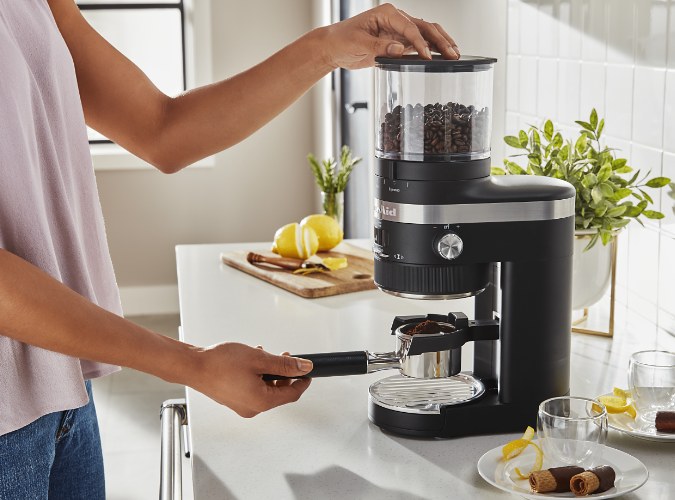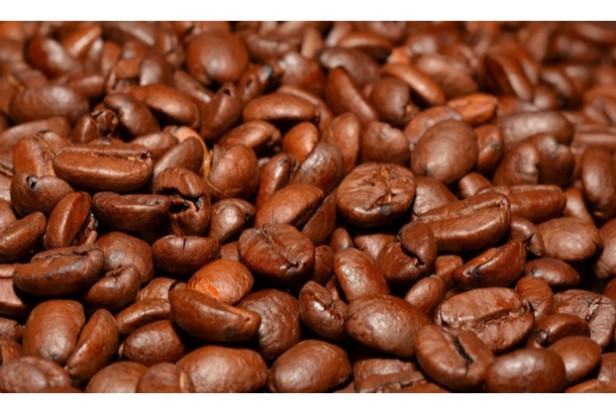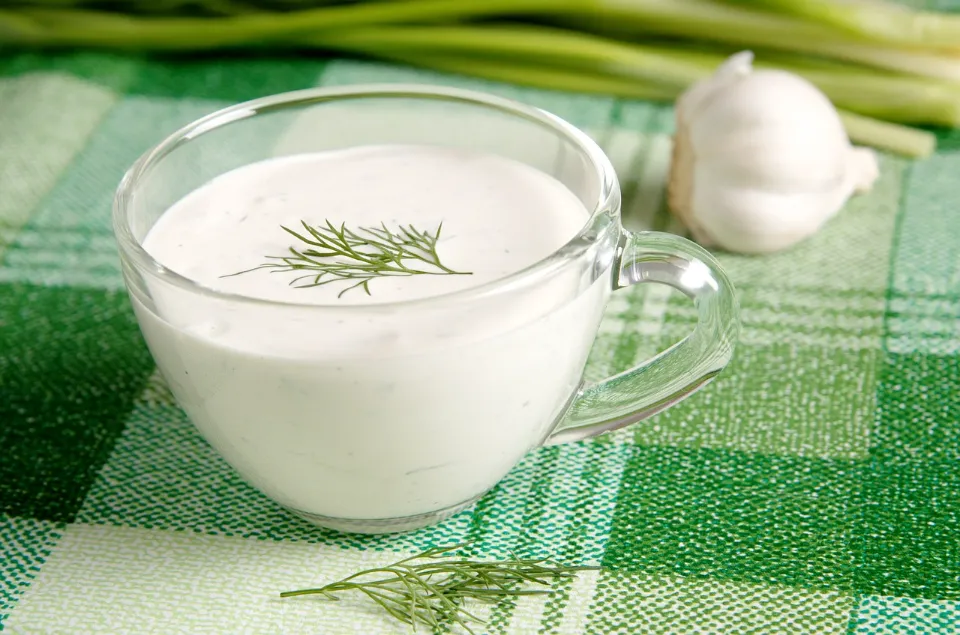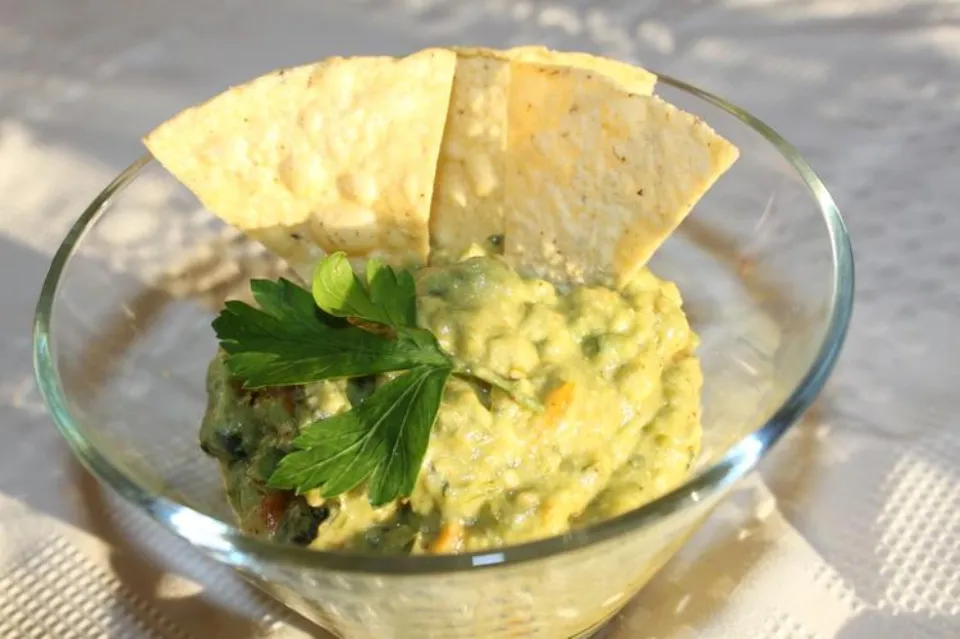Using a coffee grinder will yield better results, but you can certainly grind coffee beans in a food processor.
It’s easy to grind coffee beans when you have a coffee grinder. However, if you don’t have a coffee grinder and aren’t sure of another method that could be used to crush the coffee, it can be difficult to grind your coffee beans without one. You may think about using a variety of grinding methods in such circumstances. If you have a food processor at home, you may think about using it to grind coffee beans, and we have to admit that this is not a bad idea.
Differences Between a Food Processor and Coffee Grinder
When using a food processor versus a grinder, the consistency and texture of the coffee will never be the same because these machines operate on different principles.
Burrs found in coffee grinders use their abrasive surface to crush the coffee beans, producing a soft, fine, and consistent grind. The grind size can usually be selected because most have adjustable settings. As a result, the coffee will be crushed and have a strong, smooth flavor.
When it comes to food processors, the coffee beans are crushed with sharp blades as opposed to burrs. They cannot produce a smooth grind because they aren’t designed to crush coffee beans. Instead, they might have a coarser grind and be less uniform. Even with a coarse grind, you can still produce excellent coffee.
The grind could be made finer, but doing so would require running the food processor longer or grinding the ingredients more than once.
How to Grind Your Coffee Beans Using a Food Processor
It’s easy to grind coffee beans in a food processor, but first you must decide what kind of grind you want. Depending on that, there might be slight variations in the process. The options for grinding are listed below, along with details on how to carry them out.
- Coarse grind: You can put coffee beans in the food processor and pulse them for a brief period of time to achieve a coarse grind. Shake the grinder as you’re grinding to move the coffee beans in front of the blade. For a French press or coffee processor, this grind type is ideal.
- Medium grind: You’ll need to grind the coffee beans for a longer period of time to get a medium grind. This grind type is great for a machine-dip coffee maker and pour-over coffee maker. You should grind the beans for a longer period of time, shaking the food processor every 5–10 seconds.
- Fine grind: The task of using a food processor to achieve a fine grind is not insurmountable, despite the fact that it can be difficult. The coffee beans must be ground for a longer period of time, and a fine sieve should be used to sift them. Until you achieve the desired grind, repeat the process. For a Moka pot or espresso, it will function flawlessly.
Here’s what you need to do:
- Place the food processor’s bowl with the coffee beans inside, then secure the lid and turn the machine on.
- Locate the High/Low-speed settings or the On/Off buttons on your food processor. Five times, each for about two seconds, press the button. Start at a low speed so you can keep track of how fine the coffee grinds are.
- Shake the processor slightly to make the particles in the bowl’s top fall to the bottom by the blades. The appliance’s feet can also be gently tapped against your counter.
- Then, while closely monitoring the beans’ texture, hold down the High button for roughly 30 to 45 seconds. The whole beans in the should be shaken or tapped back into the center if any have been pushed to the side.
- Instead of being extremely powdery, you want the coffee grounds to be medium-fine or coarse.
- To move the loose grounds and lift off and set aside the processor cover, tap or shake the cover.
- Rotate and raise the worktop bowl away from the processor’s base.
- Empty the ground beans into a different bowl or jar.
- Use a pastry brush or even a tiny silicone spatula to remove any leftover grounds from the processor’s bowl.
- Dish soap should be used to wash the food processor’s bowl to avoid greasy buildup or odors that linger.
- Make a nice cup of coffee with your grounds!
Different Methods for Grinding Coffee Beans Without a Grinder
There are other grinding techniques you can try if you’ve already tried grinding your coffee beans in a food processor but weren’t satisfied with the results. The fact that there are numerous hand and power grinding techniques and that most of the necessary tools can be found in homes is unknown to many people.
Blender
A blender can serve the same purpose as a food processor and can be used in place of a coffee grinder. Although the coffee beans won’t be the same consistency, you should still be happy with the finished product.
Some blenders even have a setting for coffee grinding. Use brief, swift bursts of pressure while grinding, shaking your blender between each grind. The high speed of the blenders can cause the coffee to become bitter if the beans get too hot while being ground.

Rolling Pin
If you don’t have any electrical tools to help you grind coffee beans, you could use this manual method. In addition to a rolling pin, you’ll need a zip-lock bag to put the beans in so they don’t spill all over your workspace.
The coffee beans must first be crushed with a rolling pin before being put in a zip-lock bag. To achieve the best results, you can repeat the process as often as necessary.
Hammer
Although it may seem odd, you can grind your coffee beans with a hammer or even a mallet. However, use this grinding technique carefully as you could hurt yourself. Additionally, you’ll need a zip-lock bag or other type of plastic bag to put the coffee beans in before grinding them.
You should firmly strike the bean-filled bag with the hammer as opposed to the beans. However, you shouldn’t have any trouble getting a medium or coarse grind using this method. You won’t be able to achieve a fine grind.
Knife
When you need a quick, convenient way to grind your coffee beans, knives are a great alternative to coffee grinders that we all have at home. Although a larger butcher or chef’s knife is preferred, a regular knife will do just fine if you don’t have one.
You should use the flat side of the knife to crush the beans so that you can grind them to a medium- to medium-fine consistency. Before beginning, place the coffee beans on a cutting board and press them firmly with the knife while pulling the blade toward you to fine-grind them.
Spice Grinder
A spice grinder will produce a grind that is the closest to one from a coffee grinder of all kitchen appliances. To stop your coffee from tasting like a spice, thoroughly clean it if you’ve already used it for grinding your spices.
Put the coffee beans in the spice grinder and grind them until they reach the desired consistency for your ideal cup of coffee.
Garlic Press
Although the procedure is fairly simple, grinding coffee beans in a garlic press is very different from grinding them in a coffee grinder. Place the coffee beans in the press, then press them out. You cannot achieve a fine grind with the garlic press’s larger holes.
Instead, you’ll get a medium or coarse grind, but you can combine this with other techniques, like using a knife or a rolling pin to make the grind finer.
Mortar and Pestle
Of all the methods mentioned, this one requires the most time to grind the coffee, but it will result in the finest grind. To avoid the beans jumping out of the mortar, grind a few beans first and gradually add more.
As soon as you begin grinding, firmly press the beans down inside the mortar to make the pestle crush them. When the beans are ground, turn the pestle in a circle to further smooth the grind.
Is a Food Processor Good for Grinding Coffee Beans?
Do you still search for a reliable coffee grinder? Use your food processor in place of whole beans if you need a fresh caffeine fix right away.
A food processor is an option, but “good” may depend on what we expect from ground size. With a food processor, it is challenging for us to rely on a consistent fine ground.
The ground size will also depend on the kind of processor we have. Pulse settings are available on some blenders and processors, but not on all.
It is quicker than using a mortar and pestle, rolling pin, and hammer, though.
Final Words
There’s no need to panic if you discover that you have coffee beans but no coffee grinder. If you don’t want to try using your food processor to achieve the desired grind, you can use other grinding techniques to make the ideal cup of coffee.
FAQs
Answers to frequently asked questions about using a food processor to grind coffee beans can be found here.
Can I Grind Whole Coffee Beans in a Food Processor?
Yes, you can use a processor to grind coffee beans, but the texture and consistency won’t be as fine as they would be with a dedicated coffee grinder.
Can I Grind Coffee Beans in a Small Bullet Blender?
If you only need to grind a small amount of beans—say, one or two tablespoons—for a single serving of coffee, small bullet blenders work just fine.
Can I Grind Coffee the Day before Brewing?
Get your coffee beans freshly ground just before brewing for the best flavor. The brew will taste weaker and have a more muted aroma if it is made a day in advance or even the night before.
Can You Grind Coffee Beans in a Magic Bullet
Yes, you can grind coffee beans with your Magic Bullet. However, if your current coffee grinder breaks down, you are entirely within your rights to use this reasonably priced grinding option. You would perform better with a manual coffee grinder with actual grinder settings.
How to Grind Coffee Beans Without a Grinder
You can use a blender or food processor if you don’t want to grind them by hand. Use a hammer, mortar and pestle, hand mincer, or rolling pin to manually grind beans. You can adjust the grind’s fineness or coarseness using any of these techniques.
Can You Grind Coffee Beans in a Ninja
Yup, you sure can! If you don’t like the grind, shorten the pulse and adjust it. If you prefer a coarser blend, you will obviously blend it for a shorter period of time; if you prefer a finer blend, you will pulse it more frequently, holding it down for perhaps twenty seconds at a time. The timeframe that works for you will become clear to you.








